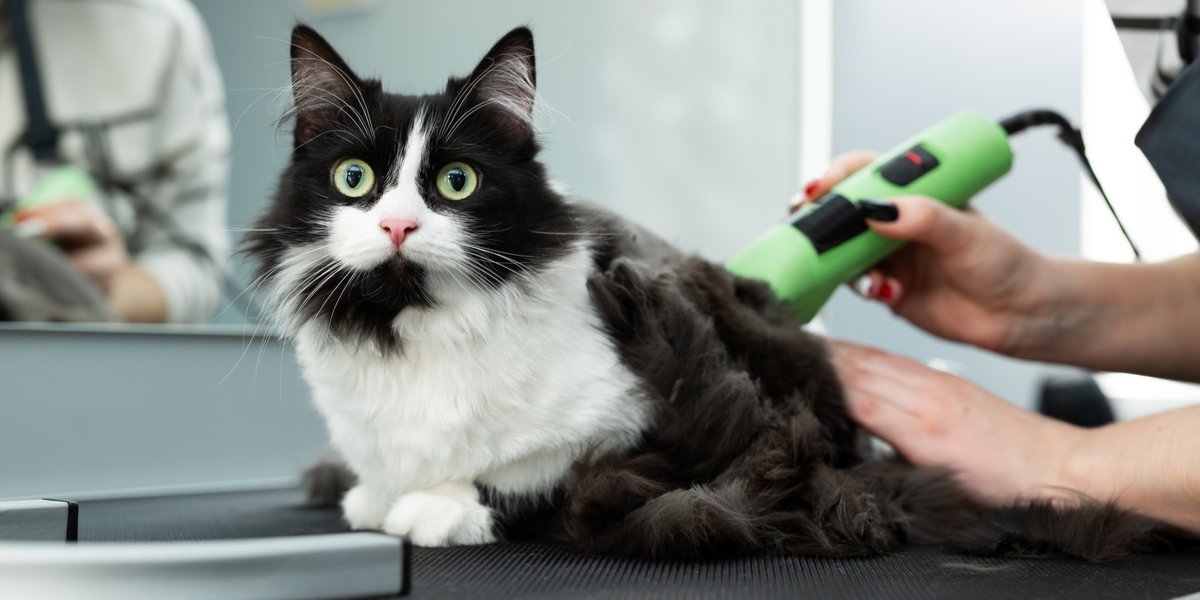
Cats generally do not have a natural requirement for trimming or shaving. Although certain dog breeds have hair that is always growing and needs regular trimming, a cat’s hair isn’t the same.
As long as you brush your cat regularly to remove loose hair and prevent tangles and mats from forming, a cat’s coat can usually be left alone.
Even cats with long, thick coats don’t need to be shaved in summer to keep cool. A cat’s coat naturally helps to regulate the cat’s body temperature depending on whether it’s hot or cold out.
When properly brushed out, air can circulate through the cat’s hair down to the skin, helping to keep the cat cool in summer. A cat’s fur also thins out in the warmer months (you’ll see an increase in shedding around spring) and bulks up in the cooler months.
Even though a cat doesn’t need to be shaved or trimmed, you certainly can trim or shave your cat’s coat if you so desire. Contrary to what you may have heard, shaving a cat is not cruel as long as it’s done by a professional and the cat is not unnecessarily upset or stressed by the process.
Reasons To Trim a Cat’s Coat
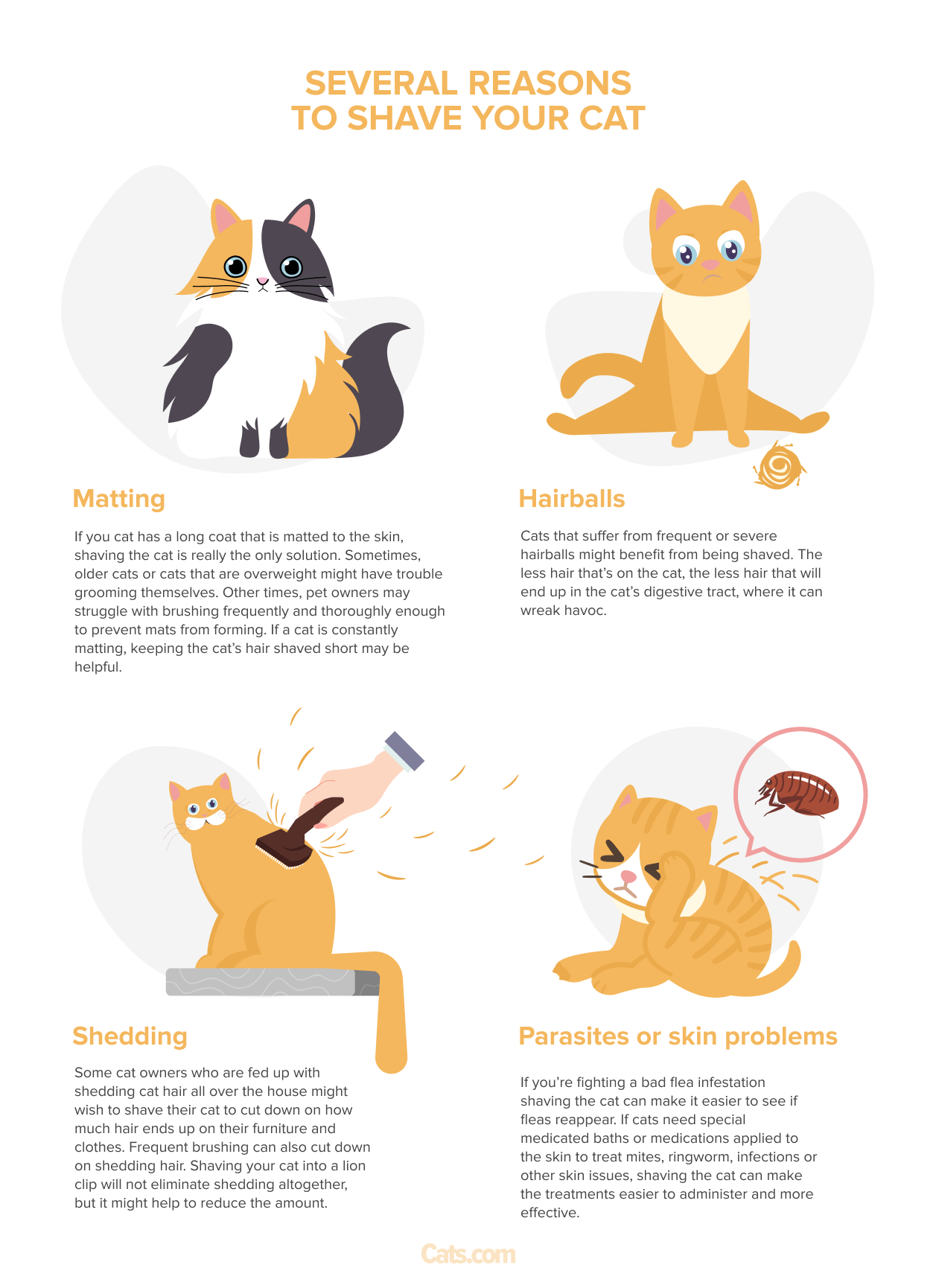
Cat owners may want to shave their cats for several reasons. Let’s examine each of them:
- Matting: If you cat has a long coat that is matted to the skin, shaving the cat is really the only solution. Sometimes, older cats or cats that are overweight might have trouble grooming themselves. Other times, pet owners may struggle with brushing frequently and thoroughly enough to prevent mats from forming. If a cat is constantly matting, keeping the cat’s hair shaved short may be helpful.
- Hairballs: Cats that suffer from frequent or severe hairballs might benefit from being shaved. The less hair that’s on the cat, the less hair that will end up in the cat’s digestive tract, where it can wreak havoc.
- Parasites or skin problems: If you’re fighting a bad flea infestation shaving the cat can make it easier to see if fleas reappear. If cats need special medicated baths or medications applied to the skin to treat mites, ringworm, infections or other skin issues, shaving the cat can make the treatments easier to administer and more effective.
- Shedding: Some cat owners who are fed up with shedding cat hair all over the house might wish to shave their cat to cut down on how much hair ends up on their furniture and clothes. Frequent brushing can also cut down on shedding hair. Shaving your cat into a lion clip will not eliminate shedding altogether, but it might help to reduce the amount.
How To Remove Mats?
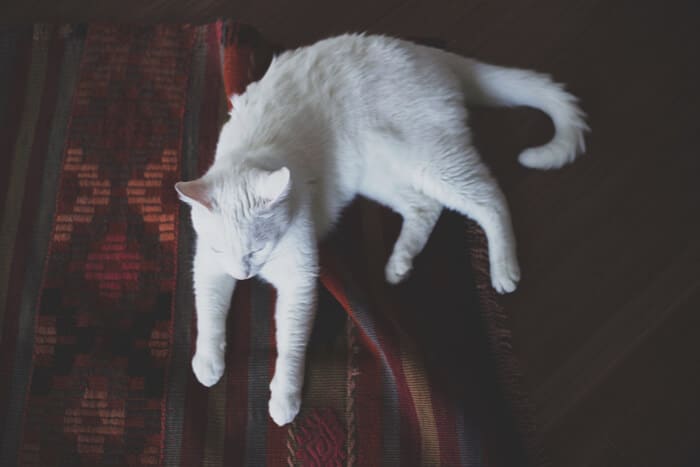
Some cats develop tangled or matted coats, necessitating the removal of the mats via shaving or the use of a dematting comb.
When a cat is not brushed regularly, the hair can become tangled. Over time, the tangles tighten and form mats. Longhaired cats like Persians need frequent brushing or combing to prevent mats. Mats are not only unseemly, they are painful for the cat.
As the hair tightens, it pulls on the skin. Over time, cats can develop sores beneath mats, which can become infected.
It’s important to brush or comb the hair all the way down to the skin. All too often cat owners only brush the top layer of hair (called the guard hairs), while mats lurk in the undercoat. To brush correctly, focus on one area of the cat’s coat at a time.
Gently brush in the same direction of hair growth until you can no longer see or feel any tangles. Once one area is brushed and smooth, move on to the next.
Don’t forget to brush the front and back of the legs, and under the belly and armpits. For heavily coated cats, you may need to lift the hair a little at a time so you can see down to the skin. Cats with long hair or thick coats may need combing as well as brushing.
If your cat has a few small mats, you can try to remove them yourself. Using a brush, comb or even your fingers, gently untangle and separate the hair a little at a time until the mat is gone. Don’t be surprised if your cat protests this process.
Dematting is uncomfortable. Even if you’re trying to be careful, you will inevitably pull on the cat’s hair and skin while attempting to work out the mat. Go slowly and take frequent breaks if necessary.
Large mats or very tightly matted fur usually need to be cut out with scissors or shaved out with clippers. In cases where a cat is matted all over its body, a full shave down is more humane for the cat. Do NOT attempt to cut or shave mats yourself.
A cat’s skin is extremely thin and delicate. Many cat owners have accidentally cut their cat’s skin while attempting home grooming and ended up in the emergency clinic. Large mats should only be attended to by a professional groomer or veterinarian.
How to Safely Trim or Shave Your Cat?
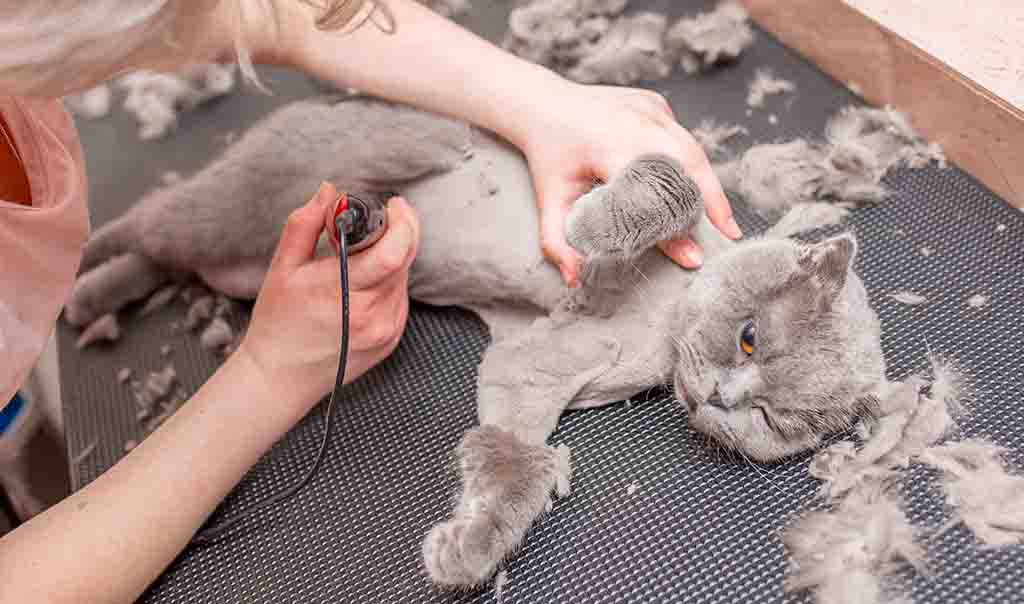
Shaving a cat is something that should be left to professional groomers, who are trained to do so safely.
Trimming or shaving cats is not a simple matter. First, cats rarely still and patiently allowing you to cut or shave their hair. Some cats may even become aggressive when you attempt to groom them.
Second, because cats have very thin skin, it’s all too easy for an untrained person to accidentally cut or tear the skin.
Clipper blades are very sharp and they heat up when in use, which can burn the skin or give the cat bad razor burn. Scissors should never be used to trim large areas of a cat’s body, although professional cat groomers may use them to trim around the head and face.
For safety’s sake, do not attempt to shave your cat yourself. Always bring your cat to a professional groomer or your veterinarian if you want your cat dematted, shaved or trimmed.
Your groomer can advise you about a grooming schedule so your cat doesn’t become matted again.
How To Shave a Lion Cut?
A professional groomer can give your cat a lion cut or lion trim, shaving the cat’s body while leaving the head, ruff (mane) and tail fluffy. The legs are generally trimmed about halfway down, leaving fluff on the lower half and paws.
Is It Bad To Shave a Cat?
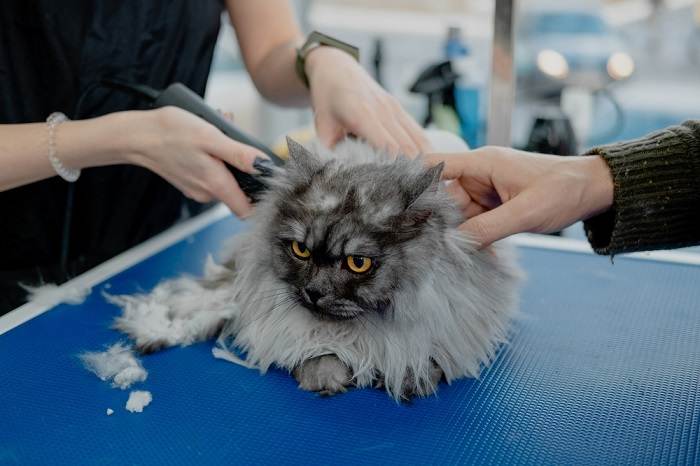
There are some downsides to a lion cut. Because the hair is shaved all the way down to the skin, there is more risk of cutting or injuring the skin while attempting this clip.
Additionally, longer hair protects the cat’s body from sunburn and scratches, and keeps the cat warm.
Outdoor cats should not be shaved into a lion trim and in winter, indoor cats in a lion trim might need a sweater to keep warm.
An alternative to the lion trim is something that’s variously called a teddy bear trim, pajama trim, comb cut or plush trim.
Using a comb attachment over the clipper blade, the groomer trims the hair, leaving about 1/2 inch to 1 inch of hair. With this clip, the hair is significant shorter but not shaved all the way down to the skin.
A teddy bear or pajama trim is a great option because it offers many of the benefits of a shorter coat while leaving enough hair to protect the cat’s body and provide warmth.
However, this trim cannot be done on a matted cat. Cats with very matted hair should be shaved all the way down to the skin as with a lion clip.
Another alternative to a full shave or trim is a simple belly shave. A belly shave leaves most the cat’s coat long. Removing the hair from the underside of the cat can be helpful for preventing mats since some cats don’t like having their belly brushed.
Grooming for Health and Comfort
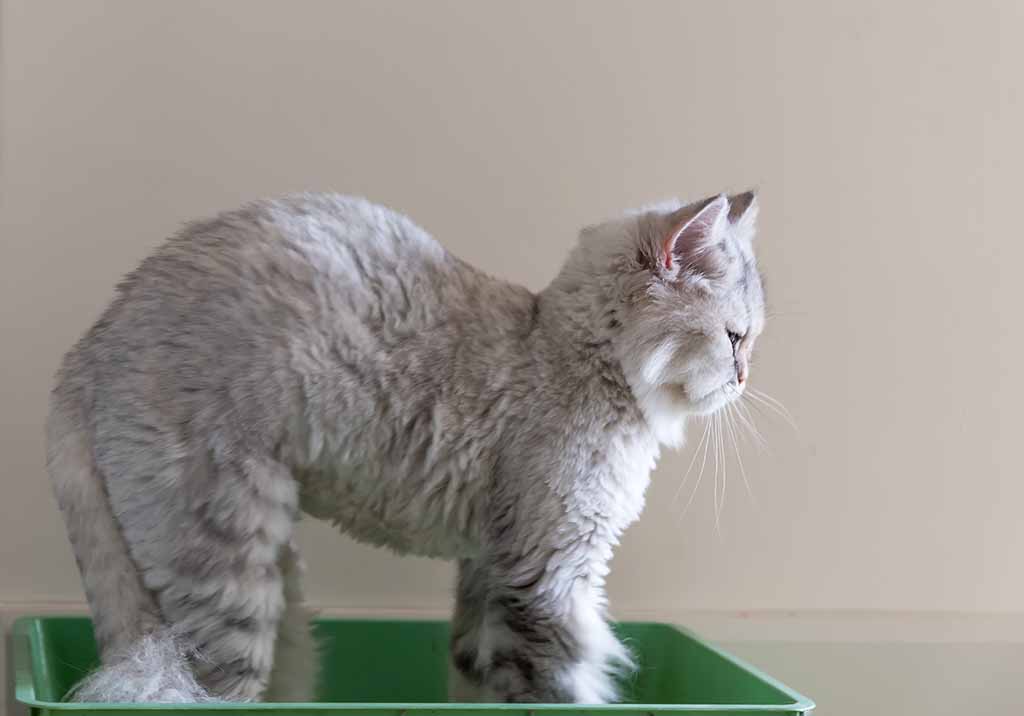
A teddy bear cut or pajama clip shortens the coat without clipping it to the skin.
Although most cats don’t really need to be shaved or trimmed, doing so it sometimes the best choice for both the cat and the cat owner.
Shaving your cat doesn’t mean you no longer need to brush her. As the hair grows back, it can become matted again if you aren’t brushing enough.
It’s important to note that shaving a cat, especially regularly, can alter the texture and color of the hair. Also, if a cat has certain health problems, the hair might not fully grow back after being shaved.
Frequently Asked Questions
Is it cruel to shave a cat?
Although shaving a cat is not usually necessary, it’s not cruel when it’s done safely by a professional and as long as the cat isn’t overly upset or stressed by the process. In some cases, shaving is not advised. Don’t shave your cat if her temperament makes the process dangerous. Cats that become aggressive by the grooming process might move so much they risk being cut.
They might also injure the grooming professional. Cats that are overly stressed by grooming risk overheating or suffering breathing difficulties. It's also just not humane to subject a cat to undue stress unless it’s a matter of health. If your cat is severely matted but resists grooming, your veterinarian might recommend a shave under sedation at the veterinary clinic.
What happens when you shave a cat?
To shave a cat, a professional pet groomer uses electric clippers to shear away the hair down to the skin leaving just a little peach fuzz behind. Typically, the entire body is not shaved. Most often, cats are given as lion clip (a shaved body but leaving the head, ruff and tail fluffy). Cats can also get a teddy bear clip or pajama clip, which clips the hair shorter but not all the way down to the skin. Although the cat’s hair will grow back, shaving may change the texture or appearance of the coat, including the color.
Can you shave a cat with human clippers?
Pet owners should not attempt to shave their cat at home with human clippers or even clippers made for pets. Cats are not usually accepting of shaving, and their skin is very thin and could be accidentally cut. Similarly, never attempt to trim your cat’s coat using scissors. The risk of injury to your cat or yourself is too great. Always bring your cat to a professional groomer or your veterinarian for shaving or trimming.
How do you safely shave a cat?
Although cats are not known for their willingness to stand still and remain calm while being shaved, professional groomers have the training and skills to accomplish this task safely. They are skilled at restraining the cat and gently manipulating the cat while being cautious around sensitive areas. Veterinarians and veterinary technicians can also safely shave a cat. It is not advised for pet owners to attempt to shave their own cat due to risk of injury to the cat or to the pet owner or both.
How much does it cost to shave a cat ?
The average cost of shaving a cat ranges $30-$60






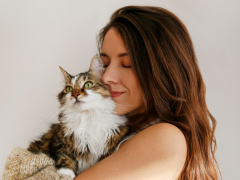

I would just like to let people reading this that to have a cat professionally shaved would cost considerably more than the $30-60 as stated. I won’t try to quote prices as I’m sure they are different in all areas but that would only cover a bath and brush, if that where I’m from. I’m in Missouri so the cost of living isn’t very high either. So please do your research before you go to the groomer with unrealistic ideas.
We have shaved our long haired princess several times now because of hair ingestion causing massive hairballs. (She will not allow herself to be brushed.) She absolutely LOVES being shaved! She’s like a different cat! She runs and plays a whole lot more and stands up for herself against her sometimes bully of a brother cat (she would not do much of that with her long hair). She even seems to eat more and is not as picky, which is good for her as she seems to tend to be slightly underweight I will try and keep her shaved since she seems so much happier this way.
WARNING: If you have a multi-cat household, be VERY careful when considering shaving one of your cats. My two beloved cats were incredibly bonded and inseparable for over nine years until we made the disastrous decision to give our Maine Coon a lion cut. When we returned home from the groomers, our other cat, a Siamese, didn’t recognize his “brother” by looks and mostly scent, and attacked the shaved Maine Coon immediately. These attacks escalated that evening so badly that we had to separate our two babies, (the unshaved Siamese was out for blood, literally), and it took us over FOUR years to get them back together again to the point where the Siamese ‘accepts’ our poor Maine Coon but won’t re-establish a loving bond with him. It was HELL and beyond heartbreaking. People need to know that this can happen. ADVICE: Gradually shave a decently-sized patch of fur off the cat you want to shave and watch closely how the other cat or cats react to the newly exposed scent of the shaved area. Make sure no cats react negatively to the scent. I can now shave my Maine Coon in small sections at a time, and even gradually take off most of his fur for summer, but I have to make sure the Siamese adjusts to the scent of each newly exposed area before I remove another section of fur. A long and tedious process, but so worth doing to protect my poor Maine Coon.
I need a good CAT DETANGLER that’s safe to use on my baby. He’s a long hair. Mats are piling up because our groomer moved away. And I’m not well . I would like unscented too if there is one need to purchase ASAP.
Hi Pamela, rather than using a detangling product, I would recommend a dematting comb or deshedding tool. You’ll find some recommendations in our article on the best cat brushes. Hope this helps!